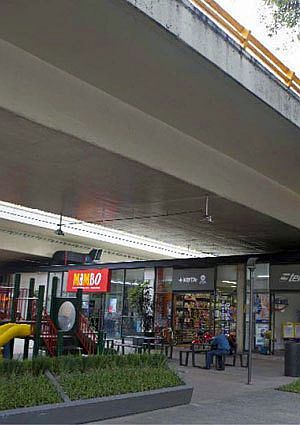Mexico City, Mexico - Mexico City, one of the world’s biggest metropolises, is getting creative about using the leftover spaces under its bridges. After the success of a pilot program called Bajo Puentes, or Under Bridges, which turned four previously trash-strewn, vacant, underpass spaces into vibrant shopping plazas, playgrounds, and cafes, the city is expanding the program, adding another five and targeting thirty more as candidates.
Earlier this summer, The Washington Post reported that urban planners in Mexico City "have found a way to add thousands of square feet of new commercial and recreational space - and it isn’t costing local government a cent." This new private-public sector model for reusing underpasses is a smart one: Get local developers to pay for the construction and upkeep of the spaces.
This is how it works: the city government’s department of housing and urban development asks business owners and developers to take on leases for these places at below-market rates, but also asks them to pay for the clean-up, construction, and upkeep of the sites. Local businesses have to leave 50 percent of the area as public space, but 30 percent can be used for commercial purposes, and 20 percent for new parking.
One local owner of a "Hawaiian-themed salad bar" who has taken up residence under an expressway said: "This used to be a dark, dirty place where vagrants slept, and now look at it." Her brand-new food court was apparently packed, in large part because of her tacos, but also because it was cooler under the underpass and "there was no discernible noise from the heavy traffic overhead."
Eduardo Aguilar, an urban planner for the Mexico City government who helped design the program, said: "These were spaces that generated no benefit and had been illegally appropriated as dumping grounds for trash or as homeless campsites. They were spaces that cost the city to maintain and were a drain on resources."
"These place are well-lit at night and they attract a lot of people. With the addition of pedestrian walkways, these are actually safe place to be in," said Aguilar.
One of the existing Under Bridges even has outdoor exercise equipment, which is a local draw in itself. As one woman said, "not everyone can afford gym membership."
Mexico City admits it’s not a trend-setter here and has actually copied this model from other cities. Indeed, many densely-packed Asian cities have long maximized spaces under their expressways. But this demonstrates how underpasses are increasingly being viewed as assets everywhere.


